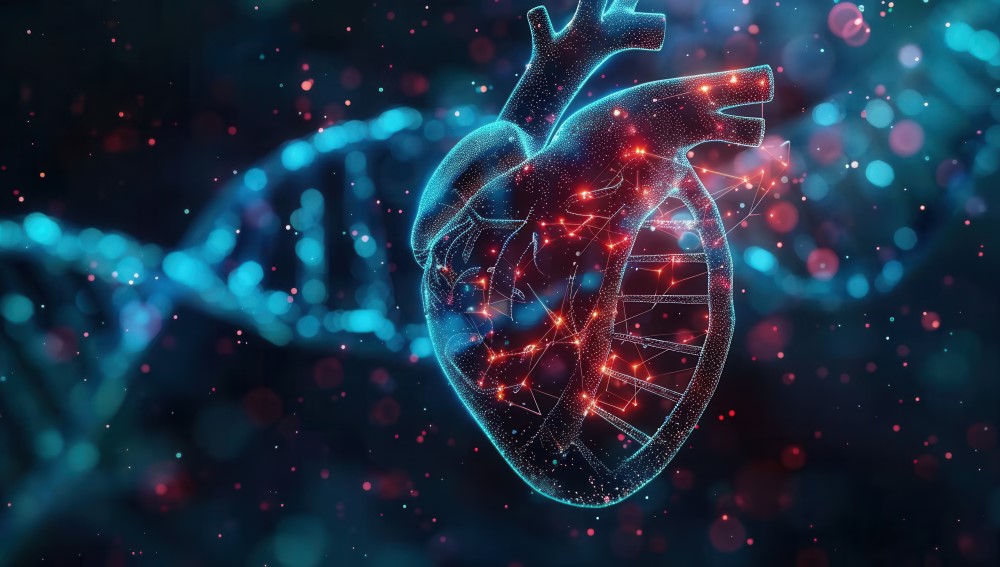Exploring the Potential of Genetic Reprogramming in Cardiovascular Patients

Genetic reprogramming has emerged as a groundbreaking approach to treating cardiovascular diseases, offering hope to patients who face limited options with traditional therapies. By leveraging advancements in genetics and stem cell technology, researchers aim to repair damaged heart tissue, regenerate healthy cells, and ultimately improve patient outcomes.
Let’s delve into the potential of genetic reprogramming in cardiovascular care and its transformative implications.
What Is Cardiac Reprogramming?
Cardiac reprogramming refers to converting non-cardiac cells into heart-like cells through genetic manipulation. This innovative technique bypasses the need for stem cell differentiation by directly altering the identity of existing cells, such as fibroblasts, into cardiomyocytes.
The process involves introducing specific genes or transcription factors that trigger cellular reprogramming. These reprogrammed cells can then integrate with existing heart tissue, potentially repairing areas damaged by conditions like myocardial infarction (heart attack) or chronic heart failure.
The ultimate goal of cardiac reprogramming is to regenerate heart tissue in situ, reducing the need for invasive procedures like transplants while enhancing the heart’s ability to pump blood effectively.
How Does Genetic Reprogramming Work?
Genetic reprogramming relies on advanced techniques to manipulate cellular DNA and gene expression. Here’s a step-by-step breakdown:
- Gene Introduction: Scientists use vectors, such as viruses or nanoparticles, to deliver specific genes into target cells. These genes activate transcription factors like GATA4, MEF2C, and TBX5, which play critical roles in heart cell development.
- Cell Transformation: Once the genes are introduced, the target cells undergo reprogramming, shifting their identity and function to become cardiomyocyte-like cells.
- Integration and Functionality: Reprogrammed cells integrate with the patient’s existing heart tissue, contributing to repair and regeneration.
Advances in gene-editing technologies, such as CRISPR-Cas9, have further enhanced the precision and efficiency of genetic reprogramming, making it a promising tool in cardiovascular medicine.
How Could Stem Cells Prove Helpful in the Treatment of Cardiovascular Diseases?
Stem cells are another vital component of regenerative medicine, offering immense potential in the treatment of heart disease. Unlike cardiac reprogramming, which directly converts cells, stem cells are undifferentiated cells capable of transforming into various specialized cell types.
In cardiovascular care, stem cells can:
- Repair Damaged Tissue: Stem cells can regenerate damaged heart muscle, improving cardiac function after a heart attack.
- Enhance Blood Flow: By forming new blood vessels, stem cells can improve circulation in ischemic heart conditions.
- Modulate Inflammation: Certain stem cells possess anti-inflammatory properties that can mitigate chronic inflammation in heart disease.
Clinical trials are already exploring the use of mesenchymal stem cells, induced pluripotent stem cells (iPSCs), and embryonic stem cells for cardiovascular applications, with promising results.
What Are the Advantages of Using Embryonic Stem Cells to Treat Heart Disease?
Embryonic stem cells (ESCs) hold unique advantages in regenerative medicine due to their pluripotent nature. Unlike adult stem cells, which have limited differentiation potential, ESCs can transform into any cell type in the human body.
Key advantages of using ESCs in heart disease treatment include:
- High Differentiation Potential: ESCs can reliably produce large numbers of heart cells, making them ideal for repairing extensive cardiac damage.
- Unlimited Proliferation: ESCs can replicate indefinitely in culture, providing a sustainable source of cells for therapy.
- Tissue Regeneration: ESC-derived cells can integrate with existing heart tissue, restoring function to damaged areas.
- Customization: Advances in genetic engineering enable researchers to tailor ESCs for specific patient needs, improving therapy outcomes.
Despite these benefits, ethical concerns and potential immune rejection remain challenges in the widespread adoption of ESC-based therapies. Continued research aims to address these hurdles and unlock their potential.
Challenges and Future Directions
While genetic reprogramming and stem cell therapy offer revolutionary possibilities, there are significant challenges to overcome:
- Efficiency and Safety: Ensuring that reprogrammed cells function effectively without forming tumors or causing adverse effects is critical.
- Delivery Methods: Developing safe and efficient ways to introduce genes or stem cells into the heart is an ongoing area of research.
- Ethical Considerations: The use of embryonic stem cells raises ethical debates, prompting researchers to explore alternative sources like iPSCs.
Looking ahead, advancements in biomaterials, 3D bioprinting, and personalized medicine are expected to complement genetic reprogramming and stem cell therapies, enhancing their effectiveness.
Final Thoughts
Genetic reprogramming and stem cell therapies represent a paradigm shift in cardiovascular care, bridging the gap between modern medicine and the body’s natural ability to heal itself. By transforming the treatment landscape for conditions like heart failure and myocardial infarction, these innovative approaches offer hope to millions of patients worldwide.
As research continues to advance, the integration of genetics and heart disease therapies could pave the way for a future where regenerative medicine becomes a standard treatment for cardiovascular conditions.


